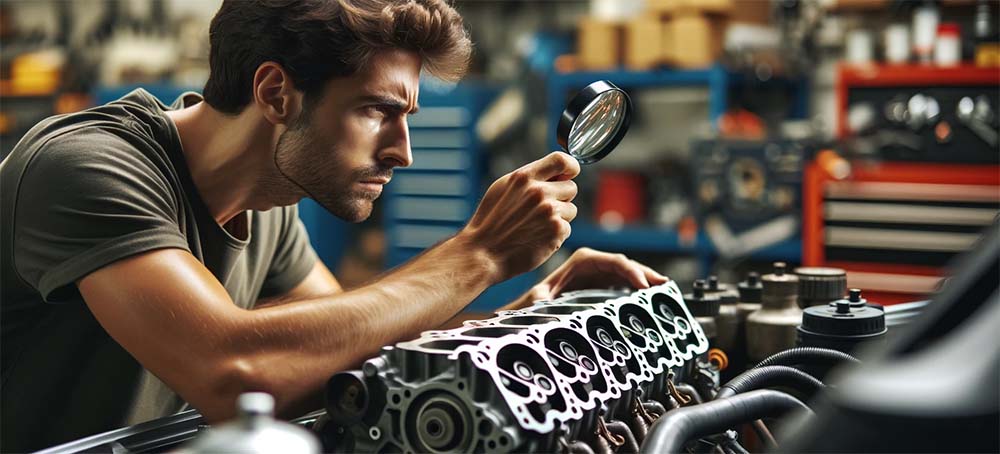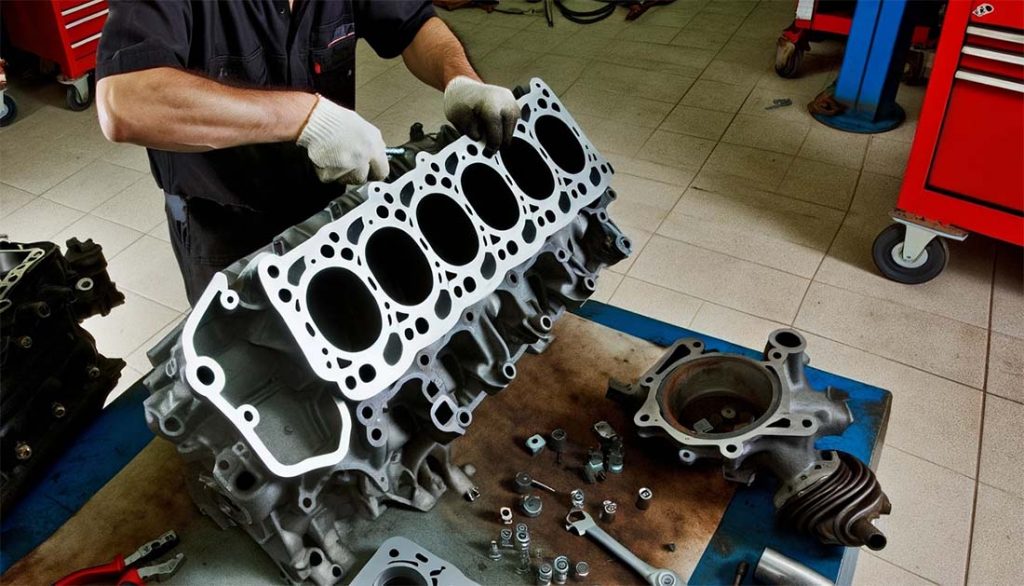Identifying a cracked cylinder head early is essential for maintaining the health and performance of your engine. A cracked cylinder head can lead to significant issues, such as coolant leaks, engine overheating, and ultimately, engine failure. The cylinder head itself is a pivotal component of the engine, serving as the top part of the combustion chamber where it endures extreme heat and pressure during operation. Given its critical role, it’s subjected to conditions that can easily cause it to crack, especially in older vehicles or those that have experienced overheating incidents. Recognizing the early signs of a cracked cylinder head and knowing how to test for it effectively can prevent costly repairs, extend the life of your engine, and ensure your vehicle remains reliable on the road.
Signs of a Cracked Cylinder Head
The presence of a cracked cylinder head can manifest through several warning signs, which if detected early, can save you from more severe engine damage. These signs include a noticeable loss of engine power, which may feel like the car is struggling to perform as it should. Overheating is another common symptom; if your engine temperature gauge consistently reads higher than normal, it could indicate a crack in the cylinder head allowing coolant to leak. Such leaks can also lead to visible coolant loss without an apparent source. White smoke from the exhaust is a telltale sign, suggesting coolant is burning within the combustion chamber. Additionally, unusual noises emanating from the engine, such as knocking or tapping sounds, can indicate a variety of issues, including potential cracks in the cylinder head. Being aware of these symptoms and acting promptly upon noticing them can prevent the situation from worsening.
Testing Methods for a Cracked Cylinder Head
To accurately diagnose a cracked cylinder head, a combination of testing methods can be employed, each offering a unique approach to uncover potential issues.
- Visual Inspection: Begin with a comprehensive visual inspection of the cylinder head for any signs of coolant leakage or oil seeping on or around the cylinder head. This step requires meticulous attention to detail, as some cracks may be small or hidden under components or residue.
- Pressure Testing: A more technical approach involves pressure testing the cooling system. This method uses a specialized pressure tester that attaches to the cooling system, where pressure is then applied. Watching the pressure gauge for any drop in pressure can indicate a leak within the system, potentially pointing to a crack in the cylinder head.
- Chemical Testing: This approach involves applying a special dye to the surface of the cylinder head. If there’s a crack, the dye will seep into it, highlighting the crack’s presence when viewed under UV light. This method is effective for detecting both visible and hidden cracks on the cylinder head’s surface.
Each of these methods plays a crucial role in the diagnostic process, offering different insights into the engine’s condition. Utilizing these methods effectively requires a thorough understanding of engine mechanics and a systematic approach to troubleshooting.

Steps to Take if a Crack Is Detected
Upon detecting a crack in the cylinder head, the situation requires prompt and decisive action to prevent extensive damage to the engine. The course of action largely depends on the crack’s severity, location, and the vehicle’s overall condition. For minor cracks, repair options such as welding or using a high-quality sealant might suffice. These methods can provide a temporary fix, prolonging the engine’s life until a more permanent solution is viable. However, it’s crucial to understand that not all cracks are suitable for repair; some may be too extensive or located in areas that compromise the cylinder head’s structural integrity.
For significant cracks, replacing the cylinder head is often the most effective solution. This ensures that the engine returns to its optimal performance level without the risk of the crack leading to future problems. Replacement involves selecting a new or refurbished cylinder head that matches the engine’s specifications. It’s a labor-intensive process that might require recalibration of the engine to accommodate the new component.
When faced with a cracked cylinder head, consulting with a professional mechanic or automotive engineer is advisable. These experts can offer a detailed assessment of the damage, recommend the most appropriate repair or replacement strategy, and execute the necessary actions with precision. Their expertise ensures that your vehicle receives the best care, minimizing the potential for future engine issues.
Preventive Measures
Preventing a cracked cylinder head from occurring in the first place is the best strategy to ensure your engine’s longevity and reliability. Regular maintenance and vigilance regarding the engine’s cooling system are paramount. This includes:
- Monitoring coolant levels and condition: Ensure the coolant is at the correct level and free from contaminants. Periodic replacement of the coolant can prevent corrosion and buildup, which can lead to overheating.
- Inspecting the cooling system components: Regular checks of the radiator, hoses, and coolant pump can identify wear and potential failures before they lead to engine overheating. Replace any worn or damaged parts promptly.
- Avoiding engine strain: Be mindful of the engine’s load, especially under extreme conditions. Towing heavy loads, aggressive driving, or operating in excessively hot environments can strain the cooling system and engine, increasing the risk of overheating and potential cracks in the cylinder head.
- Utilizing quality parts and fluids: When performing maintenance or repairs, opt for high-quality replacement parts and fluids compatible with your vehicle. This can significantly reduce the likelihood of engine and cooling system issues.
By adhering to these preventive measures, vehicle owners can significantly reduce the risk of experiencing a cracked cylinder head. Regular inspections and maintenance, coupled with a cautious approach to vehicle operation, can ensure the engine’s performance and durability over the long term.
Conclusion
Dealing with a cracked cylinder head requires a comprehensive approach that includes recognizing symptoms, employing effective testing methods, taking corrective actions, and implementing preventive measures. Understanding the severity and implications of a cracked cylinder head can save vehicle owners from costly repairs and extend their engine’s lifespan. Regular maintenance, cautious driving, and prompt action at the first sign of trouble are critical strategies in preventing and managing this issue. With the right knowledge and approach, drivers can ensure their vehicles remain reliable and perform optimally, safeguarding their investment and safety on the road.

